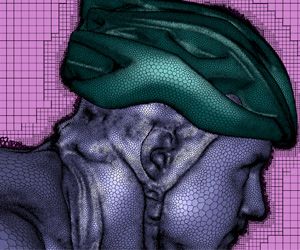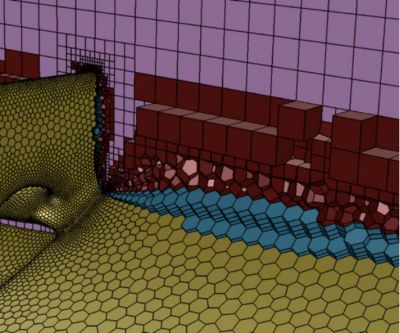-
-
학생용 무료 소프트웨어에 액세스하기
차세대 엔지니어에게 힘을 실어주는 Ansys
학생들은 세계적 수준의 시뮬레이션 소프트웨어를 무료로 이용할 수 있습니다.
-
지금 바로 Ansys에 연결하십시오!
미래를 설계하기
시뮬레이션이 다음 혁신을 어떻게 지원할 수 있는지 알아보려면 Ansys와 연결하십시오.
국가
무료 트라이얼
제품 및 서비스
학습하기
회사 정보
Back
제품 및 서비스
ANSYS BLOG
September 10, 2018
How to Build a Computational Fluid Dynamics Mesh for Fast and Accurate Simulations
Mesh creation is one of the biggest reasons engineers have a hard time setting up a computational fluid dynamics (CFD) simulation.
Even CFD experts can have a hard time building a fast and accurate mesh from complex geometries and flow regimes.
The trick is that engineers need accuracy near the thin boundary layers, which requires a very tight mesh.
However, this tight mesh slows down the processing of the fluid’s bulk without adding any accuracy.
The solution is to have multiple meshes — with different densities and element types — at different regions of the geometry.

Traditionally, CFD experts and novices won’t be happy working with a hard-to-mesh geometry like this. However, Mosaic technology makes building this mesh much easier. (Courtesy of Centre for Sports Engineering Research, Sheffield Hallam University)
This would give you meshes that are accurate at the boundary and fast in the bulk.
Unfortunately, it’s a challenge to connect these meshes as the nodes, element types and element sizes in the bulk and boundary do not align. Engineers can use tetrahedral elements to transition between the meshes. However, these transitions create too many elements, nonconformal elements or low-quality elements.
Ansys’ newly introduced Mosaic meshing technology can help engineers connect the disparate meshes in their CFD simulations. The tool uses general polyhedral elements to transition between the layered elements hear the boundary layer and hexahedral elements in the bulk.
Building a Computational Fluid Dynamics Mesh with Mosaic Technology
The Mosaic technology can connect any mesh to another mesh — automatically..
Now engineers can easily build meshes that utilize the best elements for each region of their geometry.
Each element has their advantages and disadvantages. For example, polyhedral elements are best suited to complex geometry while hexahedral are more efficient.
Mosaic meshing allows engineers to use the elements they want, where they want them and without worrying about computational time.

A Mosaic mesh that connects hexahedral elements in the bulk to isotropic elements in the boundary using polyhedral elements
In fact, when Mosaic meshes are compared to hexcore meshes of the same accuracy, engineers needed fewer cells and a third of the memory, and got their solutions in half the time.
Learn More
To learn more about Ansys Mosaic meshing technology, download the white paper: Ansys Fluent Mosaic Technology Combines Disparate Meshes.